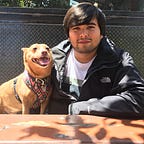VR Knowledge Bits: Sound in 3D
In the realm of virtual reality (VR) game development, audio plays a pivotal role in creating a fully immersive experience. Today, we’re going to focus on a specific aspect of this auditory journey: implementing the sound of a pistol firing in a 3D environment. This process is akin to our previous discussions, but with an emphasis on integrating the audio source component with our event system. Let’s dive in and explore how to bring your VR world to life with the power of sound.
Disclaimer: Please be aware that this article references specific assets and a package that may not be publicly accessible. However, the core concepts and techniques shared are universally applicable in VR development. We’re delving into the usage of the XR Interaction Toolkit, a versatile tool that can be adapted to various VR projects. Our goal is to impart a fundamental understanding that transcends the limitations of specific assets or packages, offering a springboard for your creative VR endeavors.
The Implementation
- Adding the ‘Audio Source’ Component: The first step involves adding an ‘Audio Source’ component to our revolver gun. This component acts as the emitter of sound in our 3D space.
- Setting the ‘Audio Clip’: Choose your desired gunshot sound and add it as an ‘Audio Clip’. This clip will be what the players hear when the gun is fired.
- Configuring Playback: Uncheck the ‘Play On Awake’ option. This ensures that the sound is only triggered when the player presses the fire button, not when the game starts.
- Spatial Blend — From 2D to 3D Sound: Adjust the ‘Spatial Blend’ slider from 2D to 3D. This is a crucial step for 3D games. In a 3D environment, audio needs to reflect the spatial dynamics — meaning, the sound should change based on the player’s position and orientation relative to the sound source. This implementation of diegetic sound, sound that emanates from within the game’s world, adds a layer of realism and immersion. It’s not just about hearing the sound; it’s about feeling its direction and distance, enhancing the player’s presence in the virtual world.
- Event System Integration: Next, add an event under the XR Grab Interactable’s ‘Activate’ field. This is where the magic of interaction happens.
- Linking the ‘Audio Source’: Drag the ‘Audio Source’ into the object field of the event. This links our sound to the specific action (in this case, firing the gun).
- Activating the Sound: Finally, in the ‘function’ dropdown, select ‘AudioSource’ > ‘Play()’. This function call is what triggers the sound when the gun is fired.
Until Next Time…
Today, we’ve successfully integrated a gunshot sound into our VR game, enhancing the realism and immersiveness of the experience. Understanding how to use audio effectively in a 3D environment is not just about adding layers to your game; it’s about crafting an experience that resonates with the player on a deeper level. Through the use of diegetic sound and spatial audio, we bring the virtual world to life, making every action and interaction within the game more impactful and memorable. This knowledge serves as a foundation upon which you can build more complex and engaging audio experiences in your VR projects.
